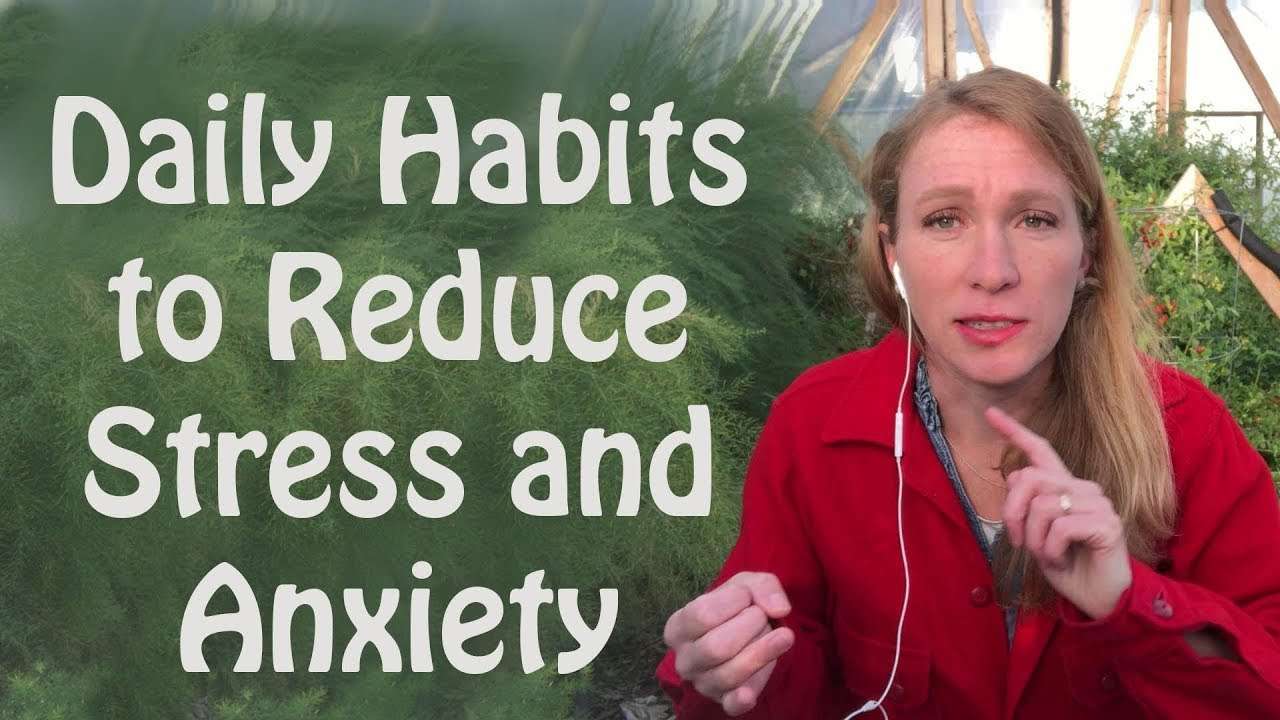The stress response is supposed to help you. It’s about performance and taking action, but it’s also supposed to be a short term reaction. It’s healthy for bursts of speed, but it becomes unhealthy when it’s chronic and the stress remains unresolved.
Take The Little house on the prairie story- they worried, they didn’t sleep, they took action, they did what they could to save the corn, some plants lived, some died, then they relaxed. Our body has a natural balancing reaction to the stress response- the parasympathetic response. But most of us don’t know how to turn it on. You can turn it on through grounding exercises or breathing exercises, but the most natural way is to simply complete a task. You feel worried about an assignment, then you turn it in. ahhhh.
This is one reason why coping skills can only go so far in helping anxiety- because anxiety is best Resolved by doing one of two things, either taking action to resolve the problem or threat or whatever it is or to practicing active acceptance letting go of the things you can’t change.
But in our virtual world, Even when we do complete a task or resolve a problem it can be hard to see the results, so find a way to acknowledge when you can “set a task down”. Make it concrete. I really like checklists, but there are lots of ways to Mark something off when you’ve completed it. You could use a physical button like Mike Boyd or Simone Giertz or give yourself some other physical, tangible way to celebrate your success.
This can be hard to do with long running stress or long term projects. But you can practice little skills to turn off stress. Something I learned from Michael Barrett, The director of the center for change-an ED tx center. Every day when I drive home from work I say a little prayer- Lord, I’ve done the best I can-they are now in your hands.
There are many ways to do this, but the basic idea is choosing when to carry something mentally heavy and when to set it down. So it could be as simple as turning off notifications on your phone or setting boundaries at work about when they can and can’t contact you.
When your job is mostly mental, emotional or virtual I also really find it helpful to choose something manual to complete. It can be really nice and relieving to see physical progress on a task.. So clean something, mow the lawn, fix something physical, there’s something about physical tasks and completion that seems to just click that aaahhh button, that parasympathetic response in our brain.
Managing stress involves a lot of things: a healthy work-life balance, good boundaries, sleep, exercise. But changing what you eat can also have a big impact on your stress levels. And that’s because what you eat impacts cortisol levels.
Now, cortisol is known as the stress hormone. It’s part of the activating, energizing response in your body, and it triggers the fight-or-flight response, but it plays a lot of other important roles in your body too. Cortisol helps regulate everything from sleep cycles and inflammation to blood pressure and blood-sugar levels.
Cortisol is released by the adrenal gland in response to a physical threat like an injury or a mental threat like a deadline.
And cortisol isn’t inherently bad; it’s helpful in the short term. But being exposed to it for too long can lead to a chronic stress response, which can contribute to more anxiety, depression, fatigue, inflammation, weight gain, higher blood pressure, a decreased immune system, a higher chance of diabetes and heart disease.
So you can see how decreasing cortisol can have a big impact on both physical and mental health.
Meet Your Instructor
Hi, I’m Emma McAdam
I’m a licensed marriage and family therapist, and I love helping people change. I know that understanding mental health can be confusing and stressful. I also know that there’s hope! Your brain is wired to change, and deep healing is possible. My mission is to walk with people through that process.
I make mental health skills more accessible through YouTube videos and online courses. Therapy in a Nutshell is built around the idea that small and simple steps can turn into massive change and growth. I don’t just help people get feeling better; I help people get better at feeling.
I’ve been working in the field of change and growth since 2004. I got my Master’s degree in Marriage and Family Therapy from Utah State University, and I’m currently licensed in the state of Utah. I’ve worked in settings like juvenile corrections, wilderness therapy programs, residential treatment centers, and outpatient therapy.
Take a lesson from Taylor and shake it off. It just may help you de-stress.

Share on Pinterest
Caleb MacKenzie Gaskins/Stocksy United
We all experience stress in our lives. Stress can come from everyday events, like missing a bus or giving a speech. Other times, stress comes from trauma.
While some may benefit from counseling or therapy, it can also be beneficial to work with the body and nervous system directly.
This is where shaking therapy comes in.
Can shaking help with stress?
Stress is a natural reaction to something our body deems a threat. However, chronic or intense stress can have a slew of negative effects on the body.
Symptoms include:
- irritability
- anxiety
- depression
- headaches
- weakened immune system
- increased risk of heart attack
This is why stress management is crucial to overall well-being. Shaking therapy is one such management technique.
It’s also known as therapeutic or neurogenic tremoring, a phrase coined by David Berceli, PhD.
The approach involves shaking the body to release tension and trauma, helping to regulate the nervous system.
Dr. Peter Levine developed somatic experiencing as a body-based therapy to process and release trauma. In his book “Waking the Tiger: Healing Trauma,” Levine notes that animals can be observed shaking to release tension and stress. You might’ve seen a dog do this.
The shaking or vibrating helps to release muscular tension, burn excess adrenaline, and calm the nervous system to its neutral state, thereby managing stress levels in the body.
How it all works
The autonomic nervous system regulates bodily processes, including:
- blood pressure
- heart rate
- respiratory rate
- body temperature
- digestion
- metabolism
- sexual arousal
It does this with two opposing functions, known as upregulation and downregulation.
- Upregulation increases the energy available in the body.
- Downregulation decreases it.
When the body experiences stress, the autonomic nervous system elevates and affects bodily functions.
For example, when your body perceives something as stressful or threatening, your autonomic nervous system releases adrenaline and cortisol as part of the fight-flight-freeze response.
This speeds up the heart rate and gives the body a burst of energy and strength to respond to the perceived threat.
The body can also overreact to stressors, such as work or family pressure, which can take a toll on your health.
Deregulation is then needed to bring energy levels back down, lowering heart rate, respiratory rate, and blood pressure. This brings the nervous system back to neutral and resets bodily functions.
Shaking the body can help ease an overstimulated nervous system and calm the body back down.
Benefits
Shaking therapy can help manage emotional states, both short- and long-term.
Regulating stress can also prevent it from building up and developing into symptoms of anxiety, trauma, or depression.
“Stress is a baseline starting point for a lot of mental and emotional dysregulation,” says health coach and trauma expert, Adair Finucane, LMSW. “[Shaking] is a release for the body, a release for the nervous system. You are literally shaking off the dust of stress, trauma, and anything your body would prefer to not hold on to.”
Regulating stress can help:
- lessen symptoms of anxiety
- lessen symptoms of depression
- mediate high blood pressure
- boost immune function
- improve mood
- reduce stress on cardiovascular systems
- reduce risk of obesity, heart disease, and diabetes
How to do it
Shaking therapy can be performed seated or standing. Focus on particular parts of the body, simply shaking it out.
“Sometimes I just get goofy with it and make crazy movements,” Finucane says. “You can also just pause and … notice your breathing. Maybe even sigh it out, take a deep breath, and then take one of your arms and start wobbling it around a bit. Hang out here for three more breaths.”
Finucane emphasizes that you’re not really looking for anything in particular. Just be aware and curious.
Ask yourself:
- What does it feel like to be in my body?
- How did my body and emotions feel before I did this?
- How did my body and emotions feel after I did this?
Once complete, you’re ready to switch sides.
Repeat on each leg, the hips, and then the body as a whole. Shake it around and move any parts you feel like, including your head, fingers, and bottom.
You can follow along with Finucane’s video below or opt for a seated version.
For newbies
“I would recommend starting very small,” Finucane says. “I recommend that somebody starts their day by shaking for 30 seconds if they’ve never shaken before.”
Finucane says even minimal shaking, like 10–30 seconds, can change the nervous system and affects hormone production.
When you feel comfortable, you can build up the practice to 30 seconds to 2 minutes every morning and night.
You can also shake anytime you’re feeling acute stress, or when you simply feel like it.
Finucane says she shakes throughout the day, including small releases, like when returning from the bathroom.
Alternatively, find a provider of tension and trauma releasing exercises (TRE) and follow their exercise instructions and guidance.
Finding a provider for TRE
Certified TRE practitioners have training in tension and trauma releasing exercises and shaking therapy. You can find a provider close to you by searching this TRE provider list.
As shaking therapy can release intense emotions, Berceli recommends bringing someone along to support you. This is especially true if you experienced severe trauma.
“It’s still safe to do, but oftentimes people need somebody to accompany them. They might cry or get anxious,” he says. “[They may consider bringing] a clinician who helps them regulate that emotional state or even a close friend or a partner who they feel safe and comfortable with.”
Keep in mind
Lack of evidence
While shaking therapy is effective for many people, scientific evidence around the approach is still limited.
Body limitations
As with any physical movement, it’s important to consider your body’s abilities and limitations.
“People have to be careful if they have physical limitations, like an [injured] knee or hip,” Berceli notes. “It doesn’t mean they can’t do the exercises or even tremor, it just means they have to be careful … and respect the limitations of their body.”
You may choose to shake while seated to avoid injury or reduce the load on your body.
The bottom line
Shaking can help regulate the nervous system and calm the body when it’s overstimulated.
While evidence is still lacking, trauma and tension releasing exercises, like shaking, may be beneficial in managing and relieving stress.
Consider shaking at home or with a certified provider if you want to ease stress.
Marnie Vinall is a freelance writer living in Melbourne, Australia. She’s written extensively for a range of publications, covering everything from politics and mental health to nostalgic sandwiches and the state of her own vagina. You can reach Marnie via Twitter, Instagram, or her website.




